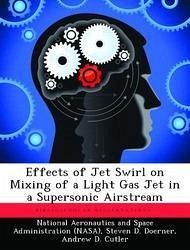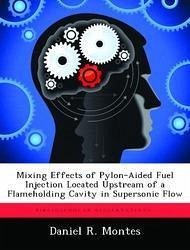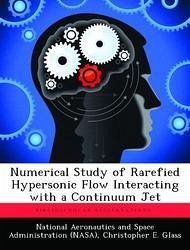Nicht lieferbar

Effects of Jet Swirl on Mixing of a Light Gas Jet in a Supersonic Airstream
Versandkostenfrei!
Nicht lieferbar
A non reacting experiment was performed to investigate the effects of jet swirl on mixing of a light gas jet in a supersonic airstream. The experiment consisted of two parts. The first part was an investigation of the effects of jet swirl and skew on the mixing and penetration of a 25 deg. supersonic jet injected from a flat surface (flush wall injection) into a supersonic ducted airflow. Specifically, the objective was to determine whether the jet would mix more rapidly if the jet were swirling, and whether swirl, with and without skew, causes the injectant-air plume to have a net circulation...
A non reacting experiment was performed to investigate the effects of jet swirl on mixing of a light gas jet in a supersonic airstream. The experiment consisted of two parts. The first part was an investigation of the effects of jet swirl and skew on the mixing and penetration of a 25 deg. supersonic jet injected from a flat surface (flush wall injection) into a supersonic ducted airflow. Specifically, the objective was to determine whether the jet would mix more rapidly if the jet were swirling, and whether swirl, with and without skew, causes the injectant-air plume to have a net circulation (i.e., a single or dominant vortex). The second part was a preliminary study of the mixing of swirling jets injected from the base of a skewed ramp. The hypothesis was that favorable interactions between vorticity generated by the swirling jet and vortices generated by the ramp could produce mixing enhancements. Both parts of the experiment were conducted at equal injectant mass flow rate and total pressure. The results for the flush wall injection cases indicate that, except relatively close to the injection point, swirl, with or without skew, does not enhance the mixing of the jet, and can in fact reduce penetration. In addition, a plume with significant net circulation is not generated, as had previously been believed. The results for the ramp cases indicated no improvements in mixing in comparison with the baseline (swept ramp injector) case. However, it was not possible to determine the vorticity mechanisms underlying the poor performance, since no measurements of vorticity were made. Thus, since many geometric parameters were chosen arbitrarily, the results are inconclusive for this class of injector.





